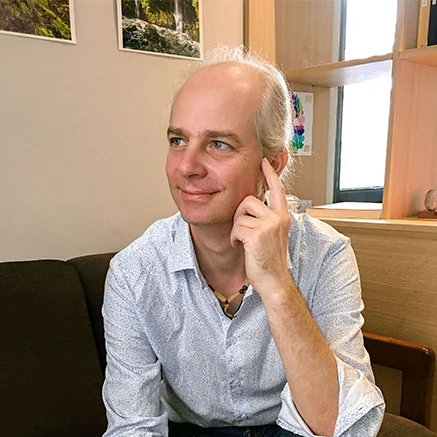Healing from deceptive sexuality requires treating dishonesty—not just sexual behavior. Recovery from infidelity or deceptive sexuality is needs more than focusing solely on stopping problematic sexual behavior. While this is one important component, it is not sufficient. Effective treatment must directly confront the pervasive problem of dishonesty—including behavioral dishonesty, psychological manipulation, and the systemic gaslighting, and structural use of deception in intimate relationships.
Deceptive sexuality is best conceptualized through a dual-disorder framework that captures two interconnected but distinct clinical dimensions:
- Compulsive-Entitled Sexuality (CES): This refers to compulsive, impulse control, and sexually entitled behaviors, the sex part of the problem.
- Integrity-Abuse Disorder (IAD): This captures the use of deception, omission, systemic gaslighting, reality manipulation as a covert psychological operation, and a method of psychological and relational control.
These two clinical problems are structurally maintained through the creation of a hidden reality—a covert psychological space built through deception. This concealed world is what we metaphorically call the “secret sexual basement”—a separate, sexual reality constructed and sustained without the partner’s knowledge or consent, which robs them of their autonomy. Once this is seen, recognized and understood, then we can recognize how a key clinical instrument in treatment of deceptive disorders becomes, the human voice.
So how does healing begin? What breaks down the infrastructure of systemic deception? What allows survivors to heal, and promotes relational justice and repair? The answer is not merely a “sex plan.” It is not just about monitoring sexual or romantic behaviors or avoiding sexual transgressions. The clinical intervention that enables healing and transformation is something often overlooked: the human voice.
The human voice is recognized a muscle, that can be exercised with intention, and as a powerful instrument, that is organic to human beings and our healing. Hence, in psychotherapeutic and clinical work, the human voice becomes the primary therapeutic tool and instrument utilized to:
- Disrupt and dismantle the mechanisms of deception
- Rebuild psychological and relational stability and coherence based in reality
- Process traumatic harm and metabolize systemic abuse
- Re-write masculinity scripts, reconstruct masculine ego-identity, and learn to voice-up, instead of man-up, and to choose voice over violence, instead of violence over voice
- Transform society towards human health by illuminating, naming and calling out the secret sexual basement as abuse, versus remaining silent as a bystander, and rather than standing in collusion, confusion, abuse-blindness, complicity and perpetuating the abuse, to learn to be a leader, to stand-up, and blow the whistle, by speaking-up, and being an Alpha.
The human voice becomes the critical therapeutic instrument for disrupting systemic deception, restoring psychological coherence, metabolizing systemic abuse and trauma, integrating truth, and restoring relational and societal integrity. Speaking truth becomes treatment. Voice work becomes clinical work. And developing an honest voice becomes the heart of healing.
The voice, speaking truth, becomes a key clinical instrument for healing. Here are the top five ways the human voice can become a key clinical instrument in the treatment of deceptive sexuality, infidelity, and sex addiction-compulsive behavior problems.
Reason 1. Abuser Addressing Dishonesty by Rehabilitating the Voice: From IMR to IAR
Effective treatment for deceptive sexuality must begin with a direct clinical intervention targeting the mechanisms of dishonesty. If deception is part of the diagnosis, then it must be directly and consistently addressed in treatment. The voice—so often used to conceal, distort, and manipulate reality—must now be retrained and rehabilitated as a clinical instrument of truth and helping the patient become more honest.
In this therapeutic context, voice work is not simply about talking. The voice is understood as a somatic, neurological, relational, and ethical system that must be reprogrammed toward honesty, authenticity, and integrity. It is through vocal expression that a patient begins to rewire patterns of deception and move toward accurate, authentic, intentional speech.
One powerful intervention is the CA (Communicate Accurately and Authentically) Exercise, which supports patients in using their voice to deliver Intentionally Accurate and Authentic Reality (IAR). This intervention helps differentiate between two fundamentally different energetic systems: IAR (truth-telling) and IMR (Intentionally Manipulated Reality). Clinical outcomes depend on the activation and conditioning of the vocal apparatus as a psychological and relational muscle, that is weak and underdeveloped, in terms of projecting honesty and now needs to be worked out and get stronger in terms of speaking truth. Truth must not only be known—it must be spoken. If you are helping someone with a dishonesty problem get better, you need to help them speak honestly moving forward, which means focusing on their voice, as part of treatment and recovery.
IMR vs. IAR as Energetic and Relational Systems
Helping patients understand this distinction is not merely conceptual—it is also somatic and relational. IAR and IMR function as vibrational frequencies within the relational system. When the voice transmits honesty (IAR), it fosters safety, coherence, and relational health. When the voice transmits dishonesty (IMR), it produces confusion, disorientation, and further psychological harm and abuse.
In fact, Intentional Vibrational Theory (IVT) posits that IAR promotes human health, while IMR promotes psychological and relational disease. These are not just ethical ideals—they are energetic states detectable in the human voice. In cases of deceptive sexuality, the person who caused harm has used their voice as a weapon of deception. Thus, the voice becomes both the instrument of the abuse and the essential tool of recovery.
Once dishonesty is properly identified as a clinical problem, it must be made visible on the treatment plan. This means working directly, in the therapy office, with how the patient uses their voice—what they say, how they say it, and how their speech patterns reflect or resist integrity.
Treating Integrity-Abuse Behaviors (IABs)
This work must also include a structured cognitive-behavioral methodology for identifying and replacing Integrity-Abuse Behaviors (IABs). Treating IABs is essential for relational integrity and clinical accountability. These include behaviors such as (see IAB chart):
- Minimization
- Blame-shifting
- Deceptive compartmentalizing
- Denials
- Lying
- Justifications and rationalizations
- Twisting the truth
- Lying by omission
- Gaslighting
Each of these behaviors must be systematically tracked, cognitively deconstructed, and therapeutically replaced with more truthful, responsible, and relationally just forms of communication. This process is essential not only for restoring individual integrity but also for rebuilding trust, fostering relational repair, and establishing justice within the relationship. Treating IABs is not optional—it is foundational for any meaningful treatment of deceptive sexuality or infidelity-based abuse disorders. To heal, patients must develop their voice as an instrument of truth. This includes tracking and replacing Integrity-Abuse Behaviors (IABs). Hence the voice, and how the person is communicating becomes key in addressing then integrity-abuse behaviors and tactics to resist integrity, twist truth, and deny reality.
From Deception and Suppression to “Voicing Up”
The concepts of “voicing-up” and “keeping it upstairs” are therapeutic tools and mantras. Patients are encouraged to practice and learn to use the human voice as a tool to navigate life, particularly relationships, instead of deceptive violence and compartmentalization. Learning to voice-up involves acquiring a new set of clinical skills: identifying emotions, tolerating vulnerability and engaging in reflective dialogue. In this model, the human voice becomes the conduit and key healing instrument for creating relational safety, repair, and any chosen re attachment and reintegration. Hence, helping clients learn to “Voice-up”, and “keep it upstairs”, may serve as helpful treatment tools for clinicians and those in recovery from a secret sexual basement story.
Two core therapeutic mantras in this model are:
- “Voice up”
- “Keep it upstairs”
These phrases refer to the shift from suppression, deception, and compartmentalization to open, conscious vocal expression and healthy relational communication, using this organic instrument we all have, which is the human voice. It has always been a precious tool for navigating life and human relationships. So, rather than “stuffing” emotions or hiding internal truths underground—where they form a hidden “secret sexual basement”—patients are taught to bring emotional experience upward and outward, through speech.
The voice becomes a clinical tool to help people navigate relationships and life and help people who had relied on deceptive compartmentalization to use their voice instead and learn to communicate, in a healthy and relational way, whatever is going on, needs to be said, or spoken, or called out, and sorted out.
As these capacities strengthen, the voice becomes the instrument through which the abuser can take ownership and meaningful responsibility, make amends, and, if chosen, reattach on a foundation of truth-telling and trust. Treatment then continues to focus on the voice by helping the patient to develop skills related to being vulnerable, emotional, and deeper in abilities to share about the ego, or subjective reality, with others, in a meaningful way, which fosters connection and intimacy.
Key Takeaway for the Abuser:
If you are the person who cheated or maintained a secret sexual reality within your relationship or family system, and you want to become less abusive and more accountable, your recovery must include a dishonesty plan—not just a sex recovery plan. Once dishonesty is diagnosed, your voice becomes the central clinical focus.
Right now, your voice, this muscle, may be weak, and underdeveloped in its capacity to tell the truth clearly, fully, and relationally. Hence, recovery and healing now depends on what comes out of your mouth, speaking IAR, and being an honest person, partner, parent and member of society, moving forward. This means learning and practicing how to “voice-up” and “keep it upstairs”. That means you need to stop subjecting people to any further IMR, particularly in your voice, language and spoken word, and focus on developing this muscle and your ability to speak Intentionally Accurate and Authentic Reality (IAR).
Reason 2: Survivor Healing Through Truth Narration, Truth-Holding, and Truth Metabolization
Survivors of deceptive sexuality are not only harmed by the sexual behavior itself, but by a prolonged campaign of gaslighting, psychological distortion, and reality manipulation—often executed through the abuser’s voice. This creates trauma not just through what was done sexually, but through the chronic dishonesty and relational coercion that eroded the survivor’s sense of reality.
One of the most profound injuries occurs when a survivor is forced into reality incongruence: a psychological bind where they must choose between trusting their partner’s words, voice and version of reality, or trusting their own inner knowing and their gut instincts. Over time, this forced choice produces hypervigilance, relational disintegration, and psychological fragmentation. The survivor begins to scan their partner’s voice—not only for words, but for tone, vibration, and energetic frequency—in a desperate attempt to detect threat versus safety.
This neurobiological response to IMR (Intentionally Manipulated Reality) is rooted in survival. After discovery, the survivor’s brain is assessing: Is this voice safe? Is this the truth? Or is this more distortion, manipulation, or gaslighting? Survivors begin listening not only to content but to vibration. The human neurological and nervous system become attuned to subtle signals of IAR (Intentionally Accurate and Authentic Reality) versus IMR, sensing whether the speaker is grounded in honesty or operating with an agenda of control. For healing to occur, survivors must be protected from IMR and exposed instead to IAR—accurate information, including in the therapy office, honest words, honest people, and honest environments.
The Science of Voice and Detection
Research supports this intuitive knowing. In a 2017 study by Hughes and Harrison, listeners were able to detect the likelihood that someone had cheated solely by hearing the sound of their voice, independent of the words spoken. Their findings suggest that the human voice carries “very thin slices” of information about intention, integrity, and trustworthiness—underscoring the clinical relevance of the voice as a diagnostic and therapeutic tool.
In deceptive abuse, the voice is used as the primary instrument of abuse. The voice is the instrument used to intentional withhold life-altering information and to also present selected information upstairs. The voice has been used for information warfare. Now, in recovery, the voice must become the primary instrument of repair and healing. The very tool once used to gaslight, confuse, and manipulate must now be used to speak truth, provide safety, and facilitate emotional and relational justice.
Trauma Recovery Begins with Protection from IMR
Treatment for survivors must begin with protection from abuse, safety, and stabilization. This includes protection from further dishonesty and being subjected to IMR. It is not enough to implement a sexual sobriety plan for the abuser. What is also required is a dishonesty treatment plan—designed to reduce further psychological harm, protect the intimate partner, relationship, the children and family system, and create relational safety. This means the abuser’s voice must be part of clinical focus: what is said, how it is said, and whether it reflects IAR, or further harm of IMR. This is not simply a communication issue—it is a matter of trauma resolution, relational ethics, and justice.
Intentional Vibe Trauma Treatment (IVTT): Voice as Healing Instrument
Intentional Vibe Trauma Treatment (IVTT) is a structured clinical model that supports this process. It attends to cognitive, somatic, vocal, relational, ethical, and vibrational dimensions of healing from deceptive psychological abuse. In this model, the human voice is the primary clinical instrument of recovery.
Survivors are invited to narrate their traumatic experiences and reality—aloud, uninterrupted, in detail, in its organic form, and in a therapeutic container, space and context, of intentional clinical frequencies, including adequate safety, humility, and IAR, to hold the survivor’s truth, facilitating their metabolization, with resonance, attention, attunement, silence and empathic witnessing. This process—speaking the truth, re-experiencing in this IAR-based context and process—supports both neurological and psychological adaptive integration. The survivor’s voice, once silenced or distorted by manipulation, becomes the primary instrument of metabolization, self-directed emancipation, and empowerment.
Restoring Dignity Through Voice and Truth
A critical dimension of healing is for survivors—especially intimate partners or spouses harmed by long-term deception—is to be granted the basic human dignity of being taken seriously and validated by being granted their day in court, where everyone gets to shut up and listen, in a way such that the story is not forgotten and will be documented. They must be given permission and space to speak, to tell their stories in their own voice, without interruption, invalidation, or minimization, manipulation, erasure.
This act—connecting traumatic memory with vocal apparatus, and vocal projection, and expression—is how survivors unfreeze the traumatic material trapped in their bodies and psyches. This takes tremendous courage, willingness, vulnerability and energetic effort. They are not just recalling; they are reclaiming their reality, by re-experiencing trauma memory in human resilience, reattaching to their internal knowing, restoring their voice as an internal authority and an instrument for narrating the unspeakable.
They are energetically transforming stories which are being held in highly charged states, by attaching them to this clinical instrument, the voice, and through projection and sharing with humans who are listening and resonating with intentional frequencies of humility, safety, holding, and being empathy witnesses, in silence, the story transforms and ends up more adaptive and discharged when it goes back into psychic, neurological, and somatic storage.
Healing is activated through the voice:
- Attaching a specific piece of the traumatic memory and story to the human voice and projecting it out in the human context of holding and resonating
- Intentional attunement by clinicians, and other survivors, rooted in humility, adequate safety, and IAR
- Clinical presence and conditions permit truth-telling and truth-holding which permits metabolization, restoring coherence to fragmented reality
- Empathic witnessing, allows the survivor’s “day in court”—being respected, heard, seen, believed, remembered, honored and dignified
- Respecting silence, as the organic metabolizer, in conjunction with the intentional vibrations, allows for trauma re-experiencing while being held and reassured in human resilience and therapeutic attachment
- Granting the survivor who is speaking, a measure of the dignity and respect they deserve for what they have endured, by being granted permission to speak without interruption or any other human voices (interference, intrusion or domination)
- Empathic and silent witnesses, trained in “sitting with” and “vibing in”, and willing to show up and provide intentional holding and resonance, in stillness, with focused intention, attention, and attunement to the vibrations in the story-tellers voice.
Key Takeaway for Survivors and Clinicians:
The partner or spouse of someone who has maintained a secret sexual life does not heal simply because the sexual behavior has stopped. Survivors need to be protected from IMR, supported by professionals who understand the damage caused by chronic dishonesty, and being a victim of a covert psychological gaslighting operation, and surrounded by environments rooted in IAR, meaning intentionally accurate, meaning logical, of reason and science-based information, and also intentionally authentic, meaning true to human subjective internal experience. IAR, requires both accurate information and authentic data and vibrational frequencies.
Treatment must include:
- A clear dishonesty reduction plan
- Exposure to IAR-based people, information, and environments
- Therapeutic space to tell their story, in their own voice, with full validation
- Clinical recognition that truth-telling is not just disclosure—it is “sitting with”, “re-experiencing with”, in a context of intentional clinical frequencies, held by people studied in truth-holding and truth-metabolization
Survivors need more than information—they need informational justice and their own voice, the most precious and powerful clinical muscle, tool and instrument, central to recovery, empowerment, and emancipation from abuse.
Reason 3. Relational Repair Requires Honesty, Vocal Ownership, and Authenticity
In the process of relational repair, the human voice becomes the central instrument through which harm is acknowledged, accountability is communicated, reality disclosed, attunement is reestablished, and re-attachment begins to rebuild. Sexual sobriety alone is not sufficient. In relational repair work, the human voice becomes the instrument through which relational harm is acknowledged, responsibility-taking can be embodied and communicated meaningfully, attunement is rebuilt and mutually agreed-upon attachment and intimacy are re-established. Stopping sexual acting out does not equal relational healing.
The relationship itself—viewed as a third clinical entity—has been injured by dishonesty and hemorrhaging with Intentionally Manipulated Reality. As such, the relationship requires its own treatment, grounded in truth-telling, truth-holding, empathic witnessing and dyadic metabolization of the truth of what happened, restoring a foundation of interpersonal justice. The relationship requires IAR, and the dishonesty needs to stop, and be replaced with honesty, fairness, and keeping everything upstairs, meaning no more basements and healthy communication instead.
Relational Repair Requires Vocal Ownership
Healing the relationship begins with vocal ownership and meaningful responsibility-taking.
This includes:
- Accurately understanding the harm caused
- Verbally acknowledging that harm to the survivor
- Expressing genuine remorse
- Articulating personal truths about past behaviors, motivations, and ego experience
- Speaking honesty, IAR, including emotional and sexual truth moving forward
Survivors need more than facts or timelines. They need IAR—Intentionally Accurate and Authentic Reality—which includes not just behavioral honesty, but also emotional honesty and subjective truth. The ability to speak authentically, from one’s internal world—about shame, fear, entitlement, injury, or confusion—is essential for rebuilding intimacy, emotional connection, and trust. Thus, relational healing requires the integration of both accuracy and authenticity. The person who caused harm must shift from using their voice to manipulate or deflect, to using their voice to disclose, reflect, and connect. They must develop the capacity to speak vulnerably, emotionally, and relationally.
Voice as a Tool for Relational Safety and Reintegration
In this phase of treatment, the human voice is no longer just a tool for disclosure—it becomes the key instrument for relational repair and re-attachment.
This includes:
- Validating the survivor’s truth
- Holding space for shared emotional processing
- Naming one’s internal experience honestly
- Demonstrating integrity and building trust through vocal IAR and IAB reduction over time
- Learning to create conditions that foster listening, truth-holding, truth-metabolization, and dyadic integration of IAR
When clinically appropriate and mutually agreed upon, formal therapeutic disclosure is one structured method of providing informational justice—giving the survivor access to reality, delivered through a voice that is now working in service of healing, not deception. Furthermore, if both partners agree to pursue relational repair, the survivor’s voice also becomes central. The ability to speak one’s story, share one’s truth, and be held in empathic attunement by the partner who caused harm, is a profound form of relational reconstitution. This work, however, must occur after stabilization, and within a carefully constructed clinical context of safety, humility, and trauma-informed containment.
Key Takeaway for the Abusive-Injured Relationship(s) and Clinicians:
The relationship itself has been wounded by deception and must be treated accordingly. Stopping sexual acting out is only the beginning.
True relational healing requires:
- A treatment plan that centers on abuse reduction and protection from dishonesty and IMR
- Truth-telling and vocal ownership
- A formal process of informational justice
- A foundation of IAR-based communication
- A commitment to vocal honesty, reduction of integrity-abuse behaviors
- Learning how to listen, hold, resonate, and attune to your partner’s voice
- Vocal skill building toward authenticity, and mutual vulnerability
If relational repair is a shared goal, it will be built through the human voice—as the primary instrument of responsibility-taking, truth-telling, truth-holding, repairing trust, and ultimately, authentic re-attachment and healthy attunement and communication. When both partners want to repair, structured therapeutic disclosure and empathic witnessing support the restoration of justice and the co-creation of a new relational dynamic.
Reason 4. Healing Masculinity—From Silent Collusion to Speaking Up and Voicing Integrity
At the heart of deceptive sexuality is a learned social blueprint—a masculinity script that normalizes secrecy, sexual entitlement, and suppression. One of the most insidious aspects of this blueprint is the unspoken permission for men to build and maintain a secret sexual life, while still being seen as men of “honor” and “integrity”, the “masculinity hall pass”, hence groomed to build-secret sexual basements and wear a mask, upstairs, or a “ masc”. Yet this hidden basement is built not on truth—but on dishonesty, manipulation, and patriarchal collusion. And it reflects a core distortion: that to be a man is to be entitled to deception, while still being socially rewarded as trustworthy.
The secret sexual basement is part of a larger masculinity script—referred to as the “hidden masculinity blueprint”, one that trains boys and men to equate silence with strength, deception with power, and sexual entitlement with identity. Toxic masculinity teaches men to prioritize control over connection and violence over voice. This script must be rewritten. Treatment requires helping men: 1) Reject deceptive dominance, 2) Embrace vulnerability and truth-telling, 3) Redefine masculinity through voice, not violence, learning to be an Alpha.
Toxic Masculinity Trains Men to Suppress and Silence, Not Voice
From an early age, boys are socialized to equate emotional expression with weakness and vulnerability with failure. They are taught to resolve conflict through domination, withdrawal, or control—not communication. Emotional constriction, covert dominance, and avoidance of vulnerability are foundational pillars of toxic masculinity—and these are the same psychological mechanisms that support the architecture of the secret sexual basement.
Rather than being taught to use their voice to relate, negotiate, or reflect, boys and men are often socialized into:
- Silence and suppression instead of expression
- Deception instead of dialogue
- Sexual entitlement over mutuality
- Manipulation instead of emotional truth
In particular, harmful masculinity scripts encourage and enable sexual manipulation, where the pursuit of personal sexual gratification is prioritized regardless of its impact on others. This belief system is at the core of sexual entitlement psychology.
The Basement Over the People Upstairs
The secret sexual basement is not just about hidden behavior—it’s about a moral inversion: prioritizing a deceptive, ego-serving reality below the surface over the actual people living above it. In this sense, building a basement means choosing violence over voice—choosing to deceive, suppress, and fragment instead of showing up with truth, vulnerability, and relational honesty. To treat deceptive sexuality, especially in men, requires a redefinition of masculinity itself. A core clinical goal becomes the transformation of masculinity from one built on control and secrecy to one rooted in voice, integrity, and relational justice.
Reclaiming Masculinity Through Voice: Learning to Voice-Up
Treatment encourages men to abandon outdated tropes like “Man-Up” and instead embrace the practice of “Voice-Up”—a new form of strength grounded in relational integrity.
Masculinity Voice-Up Work, involves Learning to:
- Speak IAR – Commit to truth and verbal accuracy
- Speak Authentically – Share internal emotional and ego experience
- Speak and Share with Humans – Build connection through honest communication
- Use the Voice to Navigate Life – Build intimacy, resolve conflict, and relate ethically
- Speak Up for Truth and Justice – Develop the capacity to “blow the whistle” on dishonesty, name abuse, and stand in solidarity with survivors, an Alpha.
In this model, voice becomes a symbol of empowered masculinity—Alpha energy, one rooted in clarity, honesty, and the courage to tell the truth even when it’s hard. Men in recovery are not just learning a set of clinical tools—they are rewriting the inherited masculinity blueprint, which for generations has equated silence with strength and deceit with manhood.
From Personal Healing to becoming an Alpha of Transformation
This transformation is not just personal—it is also structural and intergenerational. Men who choose to “voice-up” become cultural disruptors, they are demonstrating an extraordinary form of leadership, referred to as, an Alpha, which is health-promoting leadership. They model a new form of masculinity for their sons, their peers, their families, and their communities.
Each man who stops building a secret sexual basement, and starts speaking honestly in “upstairs” reality, contributes to a broader social healing. This cultural shift begins to undermine the silent collusion that enables deceptive sexuality to remain hidden and socially normalized. By replacing the old masculine script of domination, denial, and deception with a new ethic of truth, voice, and relational dignity, men not only heal themselves—they help dismantle the intergenerational transmission of sexual entitlement and abuse. This work also reclaims masculinity and redefines and moves masculinity towards a critical maturation, and movement towards healthy human gender evolution.
Key Takeaway for Men in Recovery:
Many boys and men have been groomed into a distorted masculinity—one that condones secret sexual lives, rewards dishonesty, and confuses deception for strength. But these are toxic cultural lies, not truths about manhood. You may have been conditioned to believe that cheating, hiding, and lying are part of being a man. They’re not. You don’t need a secret sexual basement to be masculine. To heal, you must unlearn this false inheritance. You must begin to use your voice—honestly, clearly, courageously—to connect, communicate, and rebuild masculine ego.
This is what it means to “Voice-Up.” This is what true strength looks like. Forget “manning-up.” Be an Alpha. Learn to Voice-Up by speaking truth and IAR. And learn to Keep it Upstairs. And then find the courage to Blow the Whistle and Voice-up by Speaking-Up.
Reason 5: The Voice as an Instrument of Transformational Power and Justice
Deceptive sexuality is sustained not only by individual dysfunction, but by systemic social and global collusion. Cultural denial, patriarchal silence, and our collective “infidelity blind spot” prevent us from standing-up to abusive authoritative social and institutional power, by using the human voice to speak-up, and name, call out, and blow the whistle on the abuse embedded in sustained deception.
Jackson Katz’s bystander intervention model (Katz, 2012) operationalizes this framework, teaching individuals to use their voice as an instrument of advocacy, breaking our complicit silence and collusion. In both clinical and social spheres, truth when spoken aloud promotes justice and interrupts interpersonal and also intergenerational deception, and the building of secret sexual basements.
Using the human voice to name this abuse, affirm and stand with survivors, not against them in collusion, becomes a courageous and powerful act of social evolutionary transformation towards human health and justice. The voice becomes a profound social and public intervention—challenging patriarchal complicity, dismantling denial, calling out distortion and IMR, and creating space for informational justice and systemic truth-telling.
Speaking up and calling out the secret sexual basement as a covert psychological operation, as systemic gaslighting and dishonesty, and as a form of intimate partner abuse, that harms and violates the people upstairs becomes a profound source of power to move human life towards health. Due to our collective infidelity blind-spot, and unconscious abuse blindness, those who see and are illuminated, may cultivate the courage and wisdom to now use the human voice for transformational intervention.
Key Takeaway for Alphas:
The human voice is not just a clinical tool. It is a mechanism of justice, social transformation, and our collective liberation and evolution. It’s time to speak. To truth-tell. To voice-up. To keep it upstairs. And to dismantle the basement—together.
The Voice is the Primary Clinical Instrument in Treating Deceptive Sexuality
The human voice is not merely symbolic. It is a literal, somatic, cognitive, relational, ethical, psychological and powerful social instrument of transformation. It is actually a key clinical instrument in the treatment for deceptive sexuality, including infidelity, sex addiction and compulsive-problematic sexual behavior as the presenting problem.
- For the abuser, the voice becomes the muscle and practice of honesty and integrity.
- For the survivor, the voice enables trauma narration, metabolization, and reclamation of internal and external truth, and reality.
- For the relationship, voice is the instrument of either further harm or establishing safety, stabilization, restoring justice, and permitting healthy reattachment.
- For men healing from toxic socialization, flipping the script of violence over voice and learn to choose voice over violence and “keep it upstairs”, not Man-up, but learning to Voice-Up
- For society, our voice becomes a powerful instrument of combating silence and unconscious social collusion, instead promoting illumination, justice, and healthy social evolution.
Healing from deceptive sexuality occurs by promoting honesty. Speaking IAR. Voice-up.
The opposite of deception is not silence—it is truth. Healing occurs when truth…is attached to the human voice…and is spoken, heard, and held.









